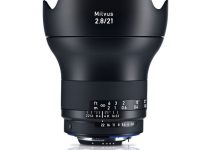DaVinci Resolve has quickly gained traction among filmmakers, especially after the implementation of the Edit Page in the software a few years ago. If you take a look at YouTube, you’ll notice that a lot of creators switched from Premiere Pro CC (and other rivals) to Resolve with great results.
While no one argues the functions and power that lies under the hood of the platform, it’s sometimes difficult to access all those handy assets if you come from another editing system and you are used to a different interface. For those that are just beginning to experiment with Resolve or have been using it for a while, here are some useful tips and tricks provided by Alex Jordan from Learn Color Grading.
Copying a grade
This tip is quite useful when working on loads of clips that have been shot in an identical lighting environment and require similar adjustments. Once you’ve made a grade and you move to the next clip, you can simply apply the grade to it.
Under the Color menu, you’ll find the Apply Grade from Previous Clip: that is exactly what you need. There’s a shortcut to recall the function too, and finally, there is also the option to apply a grade from two clips prior if the one before is not what you need.
Thumbnail size
The fixed interface in Resolve makes it all about screen real estate. Every pixel counts when you can’t undock panels and rearrange windows as you please. A handy function that can help managing space is the ability to change the size of the thumbnails in the middle of the Color page.
It’s quite simple. Under View>Timeline Thumbnail Size, you can choose between three possible sizes, namely Small, Medium and Large. Overall, this option can be an easy way to reduce the visual clutter when you are concentrating on a grade.
Window nodes
You know how to add a serial node easily to your clip, right? That’s common knowledge, but did you know that you can add a node with a Power Window loaded in already? It’s an easy task to add a window, but every millisecond you save while working counts, right?
Under Color>Nodes, you’ll find many different options, ranging from Add Serial Node+CPW that adds a Circular Power Window, to all the other shapes available. Again, this feature is easily accessible with a dedicated keyboard shortcut.
Copying Nodes between clips
Let’s say you’ve graded your clips. Then you go back and add a node to one of them, and you would like to add it to a bunch of other clips as well, what should you do?
Having selected the node you need to paste, pick the clips (by holding cmd/ctrl) you need to add it to, and then in the Color menu, opt for Append Node to Selected Clips. The name is quite self-explanatory, the node you’ve just created has been appended as the last node in the grade of the clips you’ve selected.
Qualifier Presets
The qualifier is one of the most powerful features in Resolve. Other editing and grading platforms have been trying to nail it just as perfectly, and are getting close, but still, Resolve is miles ahead.
That said, did you notice that in Color>Presets, you can find some presets for the qualifier? That is another fantastic time saver! And to up it a notch, you can always assign a shortcut!
Markers
The marker concept is not a unique feature to Resolve: many other NLEs have it, and some codecs even carry markers in the exported files metadata, but how can we use them more effectively? You could think of it as a post-it you append on your timeline during editing. In the Cut page, you can add markers easily and set a note for the grade.
Then, once in the Color tab, from the menu in the up-right corner of the viewer, you can access the list of the markers and choose the one you’ve created. That will bring you to the exact frame you’ve marked, and you can go on with the grade – pretty useful if you have multiple people accessing the project.
RGB values
Sometimes it happens that you need the exact color code of a part of your image for a graphic or an effect, how to figure that out? You could use the qualifier, but it would give you the precise points on the grading curve.
You could take a screenshot and use a graphics program, but that’s cumbersome. Instead, if you right-click (with the qualifier selected) on the viewer itself, you’ll notice Show Picker RGB Values. Now while you hover the picker, you’ll see the data displayed right there.
Confronting node structures
You surely have been comparing grades between clips, that’s Resolve 101. But what if you’ve got a complex node structure on different clips and would like to compare that instead?
Wonder no more. While having your reference clip selected, right-click on the other clip and choose Display Node Graph. Voila! You can now compare the two-node structures side-by-side.
Clean the node
Ever made a grade with a ton of nodes? Lines overlapping, going up, down and beyond? Well, as they say, a clean and tidy workspace brings to a clean and tidy mind, so let’s clean up the node structure.
It’s so much easy than cleaning your desk, I promise. You just need to right-click in the node area and select Clean up Node Graph. Done! One simple click will get Resolve to create a clean space with all the nodes in perfect order.
Multiple Stills
A very useful feature in Resolve is the Grab Still. It allows to easily save the grade you made so that you can use it later. Well, if you’ve worked on a project and think it may be useful to archive the grades from every single clip, you don’t have to go through the whole timeline grabbing stills one after the other.
Just right-click on the monitor itself and select Grab All Stills. This way Resolve will take a snap from every clip in your timeline. You can choose the still to be taken from the first frame or the middle one, and finally, if you’ve already grabbed a bunch, you can avoid duplicates by choosing Grab Missing.
Well, that was quite a list, and it does not end there! Resolve is full of features and hacks that have turned it into the staple it is in the industry. It will take a lot of time, or a couple of good courses to master it to perfection, but don’t worry, eventually, you’ll get there.
Meanwhile, if you find these tips useful and want to celebrate this year’s Black Friday, you can also check out the all-new Ultimate Resolve 16 Course Bundle by Alex and his team that includes a dozen of comprehensive video editing and color grading courses covering the ins and outs of video editing and color grading with the latest DaVinci Resolve 16. The bundle is heavily discounted right now selling for just $97. Hurry up as the sale ends Monday, December 2nd at 11:59pm Pacific Daylight Time (Las Vegas).
[source: Learn Color Grading]
Disclaimer: As an Amazon Associate partner and participant in B&H and Adorama Affiliate programmes, we earn a small comission from each purchase made through the affiliate links listed above at no additional cost to you.



